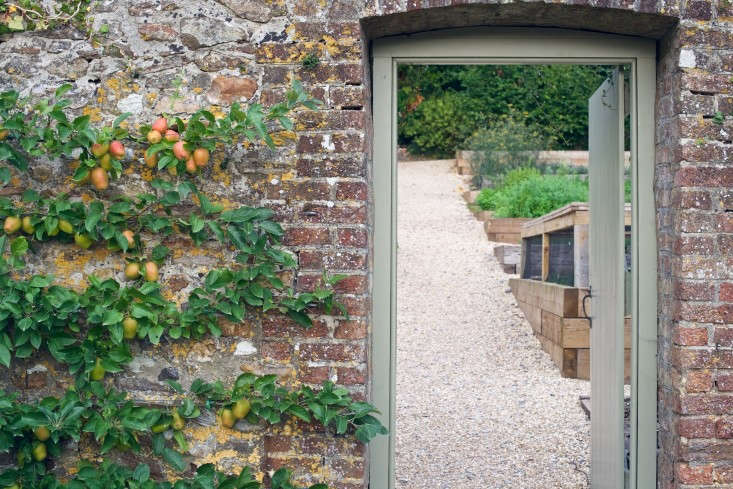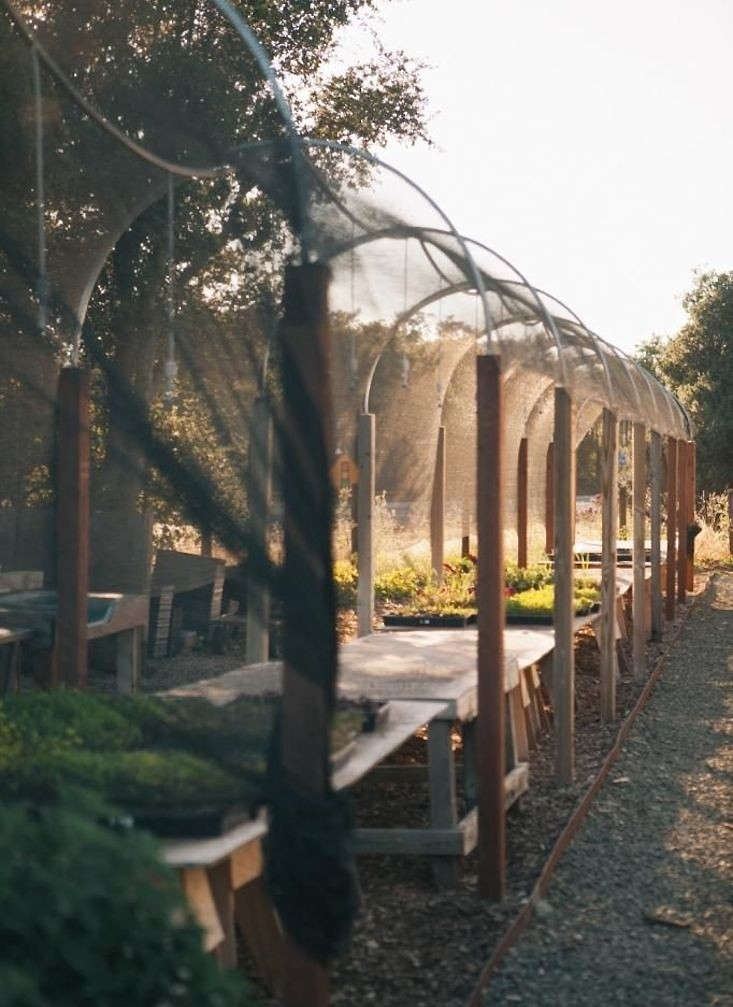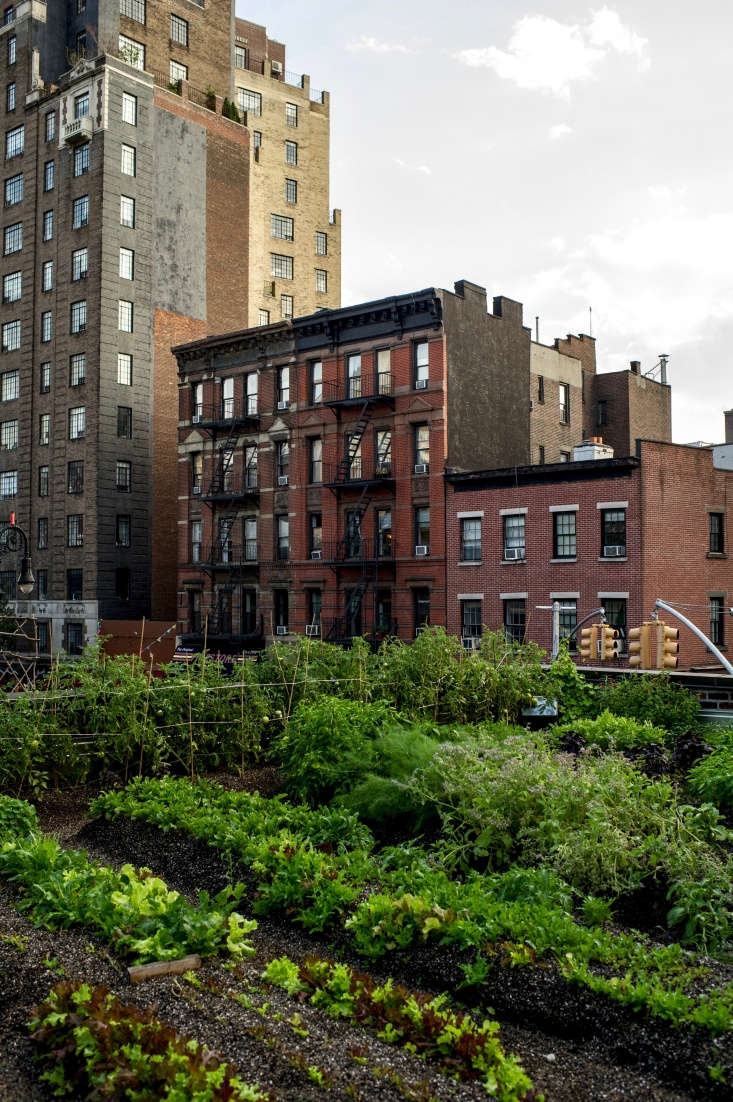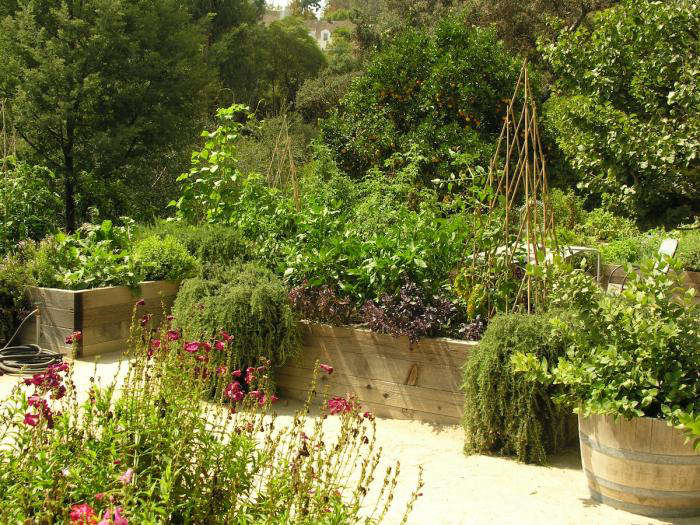A plant-based diet is good for anybody. And who better than chefs to know the ins and outs of incorporating edibles into any garden design? From the idyllic eight-acre gardens at the restored Cape Dutch farm and hotel Babylonstoren (as shown above) to a newly planted courtyard garden in Berlin (below), we’re gleaning tips and tricks from chefs’ own gardens.
From what to plant to how to harvest, here are 11 ideas to steal.
Berlin: Eat among the edibles.

If space is tight, share the sunny spots—plant edibles around the border of a dining patio. See more at Laden Cafe: Food, Wine, and Design in Berlin on Remodelista.
Cumberland Island, Georgia: Feed the soil.

On a remote barrier island off the coast of the state of Georgia with poor, sandy soil and heat-baked summers, the Greyfield Inn’s kitchen gardens produce a glorious harvest of vegetables, berries, and herbs year-round for chef Whitney Otawka’s daily menus. One secret: “The biggest challenge is the soil because it’s so sandy,” says gardener Maya Velasco. “Potassium and other nutrients drain really quickly so we have to find specific amendments for those that will break down at the right rate.”
Test your soil—and enrich it with nutrients as necessary. Add a two-inch layer of compost in the winter and the worms will work it into the soil for you.
For more of this garden, see Greyfield Gardens: A Chef’s Dream on a Remote Georgia Island.
London: Benefit from bees.

Honey, an ingredient used in cocktails for the hotel, was first produced here in 2015. Beehives and gardens make good companions. The garden at Ham Yard Hotel is packed with bee magnets such as oxeye daisies and teasels and the pretty herb garden—a long bed with marjoram, salvia, sage, dill, mint, and miniature topiarized bay,” writes Clare.
See more at Ham Yard Hotel: A Roof Garden Oasis in Central London.
Vashon Island, Washington: Collect rainwater.

For rain barrels to capture water for the garden, see 10 Easy Pieces: Rain Barrels.
For more of this garden, see Outbuilding of the Week: A Cookhouse at Kurtwood Farms on Vashon Island.
Brooklyn, New York: Grow garnishes.

Executive chef Matt Lambert grows herbs and garnishes in raised beds in a small courtyard garden behind his Manhattan restaurant, the Musket Room. Lambert, a New Zealand native, garnishes his rustic fare with homegrown greens from the rear garden.
For more of this garden, see Summer in the City: The Musket Room in Nolita on Remodelista.
Cape Town: See edibles as ornamental.

“While vegetables are here to be eaten, their ornamental appeal is not lost,” our contributor Marie Viljoen observes, during a visit to Babylonstoren farm and hotel about 45 minutes from Cape Town. See more in Garden Visit: Behind the Scenes at Babylonstoren.
The Cotswolds, England: Grow vertically.

When space is tight, train fruit trees to grow against a trellis, fence, or wall. See more of this garden at Garden Visit: The Kitchen Gardens at the Pig Hotel, Combe.
Napa Valley, California: Protect tender seedlings.

Depending on the size of your garden, use a hoop house, a wind-protection polytunnel, or a cold frame to give seedlings and microgreens a head start in the spring when temperatures dip low at night.
Brooklyn: Slim down the raised beds.

At Olmsted in Brooklyn, the restaurant’s chef Greg Baxtrom (formerly at Per Se and Blue Hill at Stone Barns) and farmer Ian Rothman (the former horticulturist at New York’s Atera restaurant) built a self-sustaining micro-farm centered on a horseshoe-shaped pine planter surrounded by a perimeter of narrow beds. The design makes it easy to reach in to harvest more than 80 varieties of herbs, vegetables, and other plants for dishes and cocktails on the menu.
For more of this garden, see Restaurant Visit: An Innovative Micro Farm at Olmsted in Brooklyn.
Oxfordshire, England: Grow heirlooms for flavor.

At Le Manoir aux Quat’Saisons near Oxford in England, 70 different vegetables are grown in the organic gardens, “with 300 different varieties,” observes our UK contributor, Kendra Wilson. “However, flavor drives the choice of variety grown. Heritage varieties often have the advantage of greater flavor despite a smaller yield.”
See more at Le Manoir: World’s Best Overnight Stay?
Manhattan: Head to the roof.

Owner Carlos Suarez and architecture firm ABA Studio created a secret garden on the rooftop at Rosemary’s in Manhattan’s Greenwich Village. The lesson? If you’re searching for a spot to grow edibles in full sun, look up on the roof.
See more of this garden at Restaurant Visit: A Secret Roof Garden at Rosemary’s in Greenwich Village.
Ready to design and plant a spring herb garden? See:
- Expert Advice: 10 Tips to Get Your Garden Ready for Spring
- 10 Easy Pieces: Heirloom Seeds for Spring
- Edibles 101: A Field Guide to Planting, Care & Design
- The New Vegetable Garden: 8 Favorite Edible Backyards








Have a Question or Comment About This Post?
Join the conversation